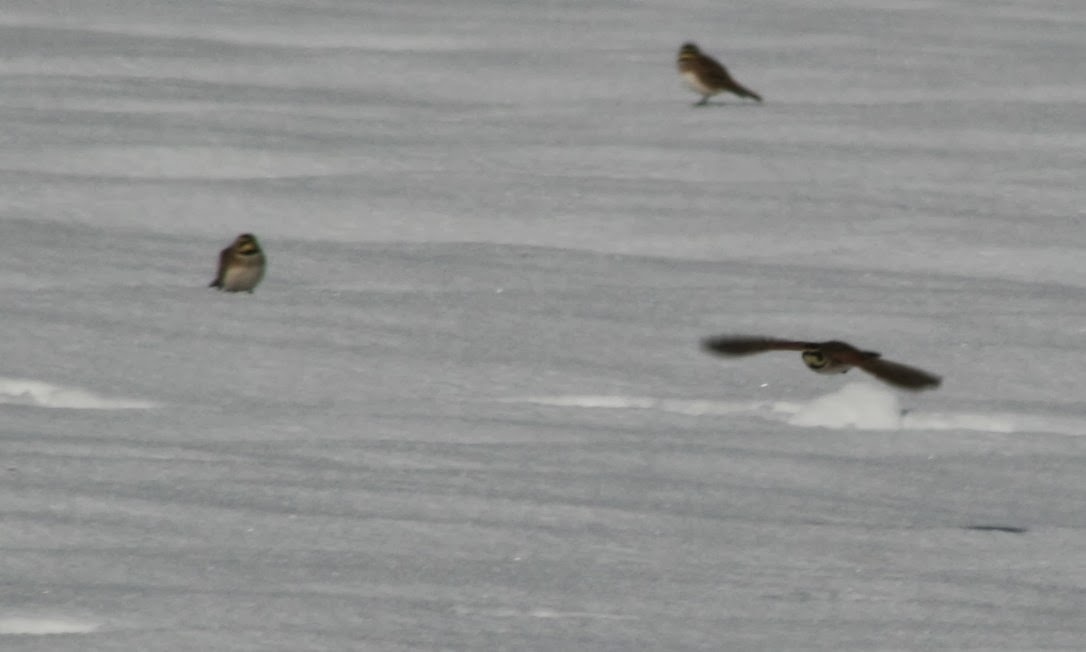During this past trip to Minnesota, we dipped out on seeing a Golden Eagle and a Townsend's Solitaire. Either would have been a life bird for me. But we got great looks at a Northern Shrike...
Shrikes are interesting birds as they are fierce predatory song birds. Northern Shrikes have stark colors that make them great inhabitants of northern territories. Like most birds, they are great listeners and Northern Shrikes have the capacity to mimic or ape the calls of other song birds to bring them out it the open. They can grab and catch small mammals and hawk insects in the air. Versatile hunters make for successful hunters.
The Back of the Northern Shrike
A Profile of the NOSH
The Northern Shrike in Flight with Prey
Seeing the Shrike hunt, kill, and carry off its prey was just awesome. The sailed across and through brambles of the roadside and just pounced on its prey. You can't help but be impressed by the small shrike's ability to hunt. Until the next time, go birding!


































